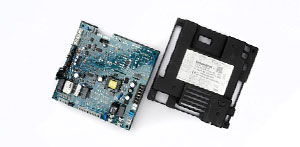Paying for energy is a major cost of running a sports hall – higher than many other sectors. This CPD, sponsored by Reznor, outlines energy-efficient ways to heat and ventilate sports halls that conform to recent changes in legislation.
Introduction
For specialists in supplying heating, ventilation and air-conditioning systems, sports hall facilities are generally divided into two types: single-use venues, which host sports activities suitable for indoors, such as tennis, badminton and basketball; and those that double-up to cater for a school’s sports activities during the day and host sporting programmes and events for the local community on weekday evenings and during the day at weekends.
The increased use of such multi-purpose halls, with their longer opening hours, means the design of a heating and ventilation system is critical in order to create the best environment for users and, crucially, to keep energy costs to a minimum. Figures from the Carbon Trust suggest that for a typical-sized sports centre, energy accounts for 30% of a venue’s running costs, second only to labour, and higher than most other sectors.
The most effective solution for any given sports hall will ultimately depend on the sort of activities it hosts and the length of time it is used. There are other factors that need to be taken into consideration, such as air movement, ventilation and air quality, maintenance – and an issue that is deemed highly sensitive in both single and multi-use venues – noise.

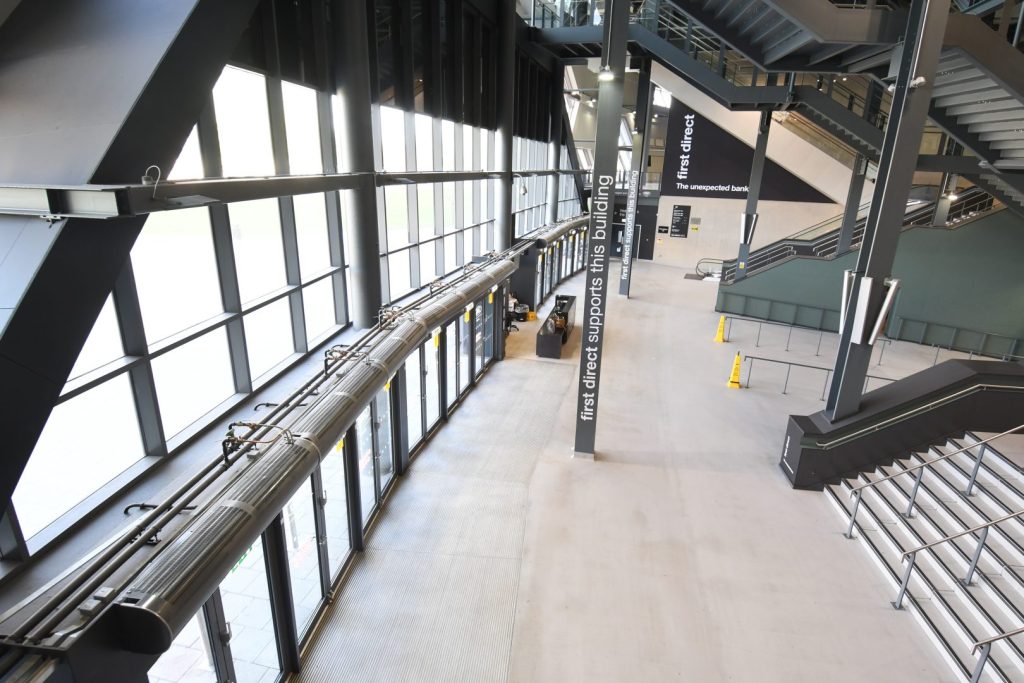

Flue Point Issues
With air movement being a key design consideration for many single-use venues, heating by infrared radiation has been the established choice for a number of years. Radiant tubes provide blanket heat coverage without moving the air, and being mounted overhead they produce infrared heat that is directed downwards towards a hall’s occupants via a reflector. Contemporary radiant tube heaters feature combustion that takes place within the firing tube, reducing both the size and weight of the unit required, as well as lowering noise levels. The burner heads of such units create a better flame configuration, improving temperature distribution, creating more even heat coverage and the need for fewer units. The use of high-efficiency burners enables fuel savings of up to 75% compared with conventional heating systems.
Large buildings heated with unitary radiant tubes often require multiple flue penetrations, either in the roof or through a wall, to remove exhaust gases. But multiple flue points can subsequently compromise the integrity of the building fabric and increase installation costs.
The use of a combined common flue system for unitary radiant tube heaters reduces the number of penetrations throughout the fabric of a building, and such flues are quieter due to there being fewer flue fans in operation.
Hot gas vacuum fans can be mounted inside or outside the building, increasing practical and aesthetic options for both the installer and the site’s operators.
On the issue of noise, Building Bulletin 93 – Acoustic Design of Schools: Performance Standards – was updated in February 2015 and sets out what the government calls “minimum performance standards for the acoustics of school buildings, and describes the normal means of demonstrating compliance with the Building Regulations”. These, or other requirements such as Sport England’s Affordable Sports Hall Guidance, stipulate the need for a continuous multi-burner radiant tube system, given that the legislation states that noise should not exceed 50 decibels for a swimming pool and 40 decibels for an indoor sports hall.
A single external burner can be used with a radiant strip heating system to produce a “blanket coverage” radiant environment via a low surface temperature emitter without moving or disturbing the air, which benefits the internal environment, and using fuels such as natural gas, propane or diesel. The burner – power for which ranges from 50kW to 400kW – for each system is designed to be fitted outside the building or area to be heated, making maintenance easier and lowering noise levels within the facility.
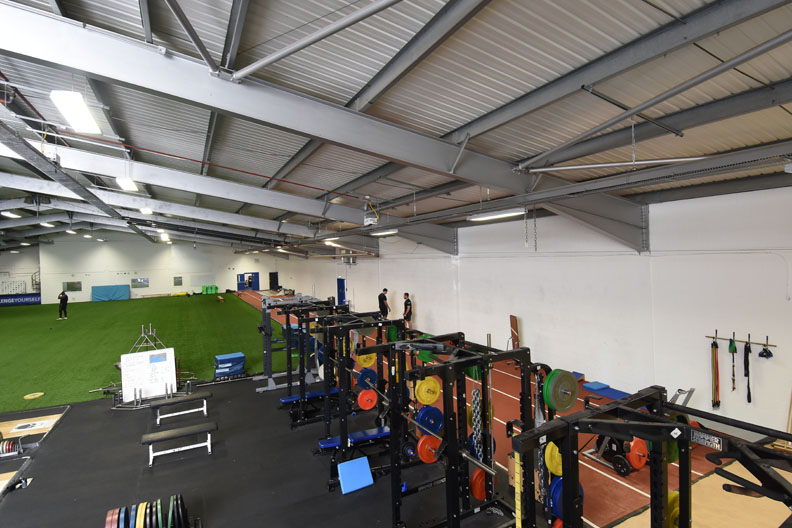



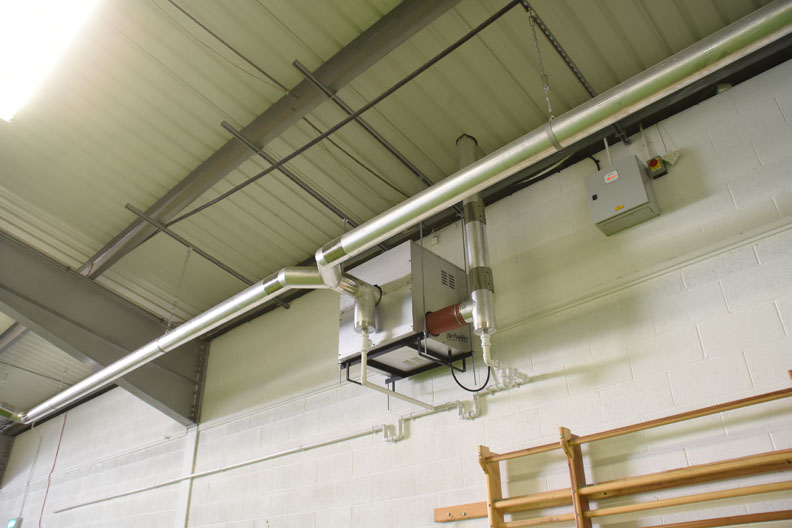
Warm Air Systems
The use of multi-use sports halls, combining school and community use, has been a growing trend in recent years, and the inevitable longer operating hours mean the type of heating system has be precisely tailored to the facility. A warm air system can be used to provide heating and ventilation, with heater batteries featuring low-pressure hot water systems, direct or indirectly fired gas, heat pumps or steam. When used for sports during winter at low occupancy levels, there is a demand for heat that can be controlled by keeping the internal temperatures relatively low.
During times of high occupancy, for example during spring and summer exam periods, heating requirements are very different – excess heat must be removed from the hall to prevent overheating, while there should be sufficient ventilation for occupants. Overheating, rather than keeping warm, is often more of an issue for sports halls, particularly multi-use ones, and more difficult to resolve effectively.
Maintaining high volumes of air flow will help keep indoor temperatures during the summer months at optimum levels.
A common solution to control summer temperatures is to use roof-mounted ventilation units with integral extract fans. But this option has its limitations, especially when the external air temperature drops during the autumn and winter months, when this solution becomes effectively unusable.
A better idea, especially where occupants undertake vigorous exercise, is to provide a single combined heating, cooling and ventilation system. This combined option means cooling during warmer months can be provided by operating the fan and outside air simply to offset increases in internal heat. This could come in the form of an Air Handling Unit (AHU) or a Packaged Rooftop Unit, which come with a wide range of heat outputs, air volumes and external static pressures.
For an AHU, gas-fired appliances are usually acknowledged as the best heat sources, since they can work independently of the heating systems that supply the rest of the property during school hours. By using an indirect fired gas burner, thermal efficiencies in excess of 91% (net calorific value) can be achieved; by using condensing burners the increased efficiencies make them eligible for Enhanced Capital Allowances.
For the Packaged Rooftop Unit, a reverse cycle DX coil can use heat pump technology when gas is not present; or when electric is the preferred energy source, when solar photovoltaic panels are present. For both options, installation time can be reduced by supplying the units to site preassembled and fully wired complete with all motor starters. Locating equipment externally means no internal disruption during maintenance, and avoiding costly shutdowns.
Warm air systems can use a variety of ductwork applications including conventional, jet nozzle and induction air distribution systems. A fabric material system uses a lightweight fabric duct that has many small outlet nozzles, which are evenly spaced along the length of the duct, or alternatively are located in specific areas.
Air is introduced into the duct and forced through the nozzles at high speed, creating a negative pressure zone. This induces surrounding air and recirculates heat from lighting and heat that has risen to the roof space and so would otherwise be wasted. In sports halls, this can provide energy savings of around 15%, as traditional destratification/air recirculation fans cannot be used because of the air movement created.
The result is evenly distributed heat at low air velocities, with low noise levels that eliminates excess heat stratification and the need for air recirculation fans. With most sports halls needing both heating and ventilation, AHUs can be a better option than a radiant system since they can meet both requirements through a single installation.


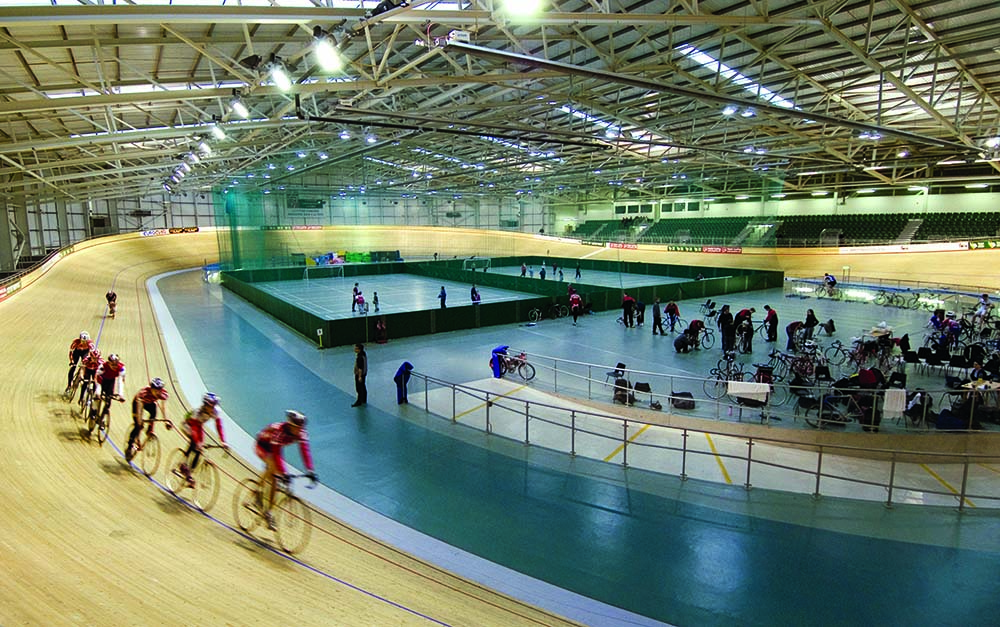
Legislative Considerations
There have been recent changes to legislation covering energy-related products (ErP) in order to increase their efficiency. ErP Lot 20 came into force at the beginning of 2018. It covers gas-fired radiant heating and specifies that such units must have a seasonal efficiency of 74% or above, as well as a maximum nitrogen oxide (NOx) emission of 200mg per kWh.
The UK’s looming departure from the European Union will not affect the need for UK systems to meet these requirements. The new regulations will also require that manufacturers of heaters publish the seasonal efficiency of their products in maintenance manuals and online.
Lot 21, covering warm air heaters has a two stage introduction – 1st January 2018 sees a minimum seasonal efficiency of 72%, whilst in September a maximum NOx emission of 100mg/kWh comes into force.
Lot 6, which began on 1 January 2016, requires ventilation units to also meet minimum efficiency standards, helping to reduce life-cycle costs and improve sustainability. It covers bidirectional ventilation units, which feature two opposing air streams, and unidirectional ventilation units, which have only one airstream. Both are covered by a set of minimum requirements including variable speed systems, thermal bypasses fitted to heat recovery systems with minimum efficiency of 73%, and limits on internal specific fan power.
How to take this module
UBM’s CPD distance-learning programme is open to anyone seeking to develop their knowledge and skills. Each module also offers members of professional institutions an opportunity to earn between 30 and 90 minutes of credits towards their annual CPD requirement.
This article is accredited by the CPD Certification Service. To earn CPD credits, read the article and then click the link below to complete your details and answer the questions. You will receive your results instantly, and if all the questions are correctly answered, you will be able to download your CPD certificate straight away.
DEADLINE: 13 APRIL 2018














